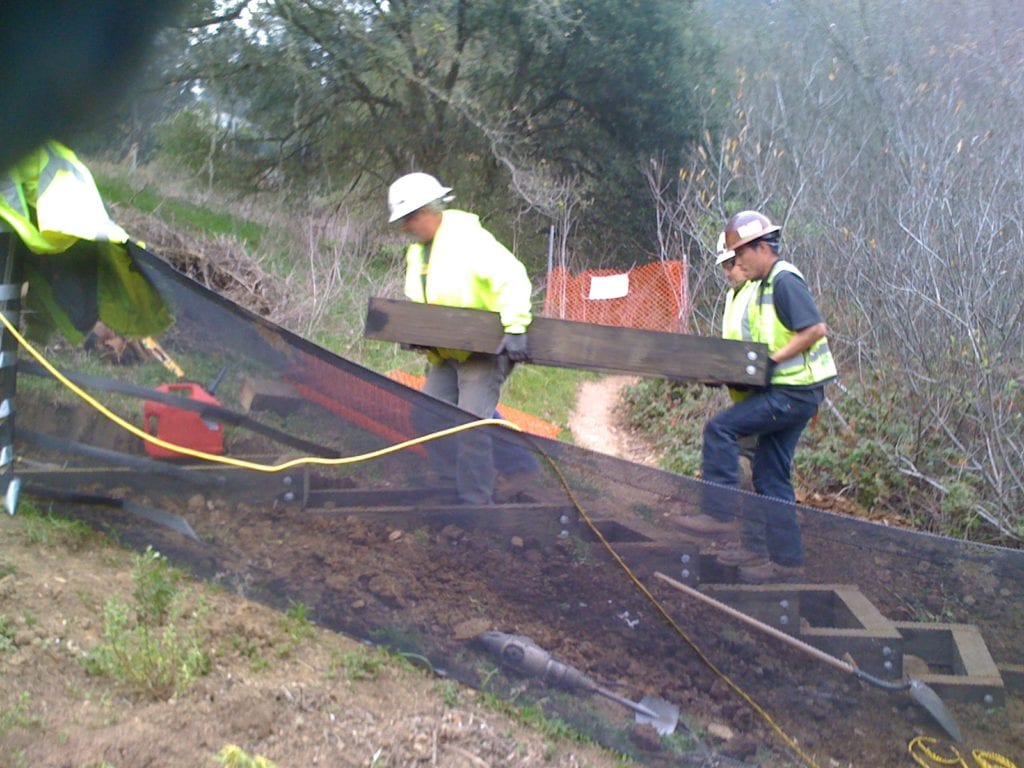
Story and photos by Murray Schneider
Saddle Trail, one of the main hiking trails in Glen Canyon park, is getting a long-needed makeover. Since Jan. 14 workers have been lugging 100 pound boxes up the steep hill along the eastern slope of the canyon to rebuild the trail. The eastern side is now open to the public, the western slope is still a work-in-progress.
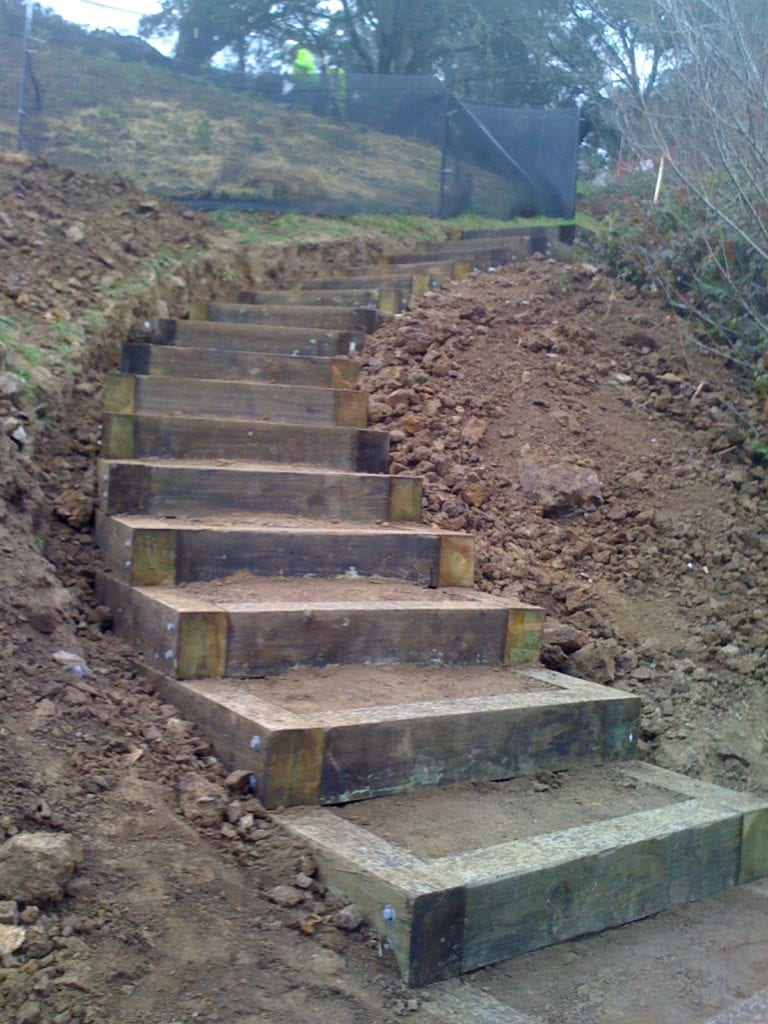 The Saddle Trail Project is being staged only a few yards north of the Islais Creek boardwalk. When it’s finished there will be a series of box steps up the side of the canyon cresting at 120 feet. At that point the trail will continue negotiating several switchbacks before it threads it way through the chert that looms high above the Willow Creek Trail.
The Saddle Trail Project is being staged only a few yards north of the Islais Creek boardwalk. When it’s finished there will be a series of box steps up the side of the canyon cresting at 120 feet. At that point the trail will continue negotiating several switchbacks before it threads it way through the chert that looms high above the Willow Creek Trail.
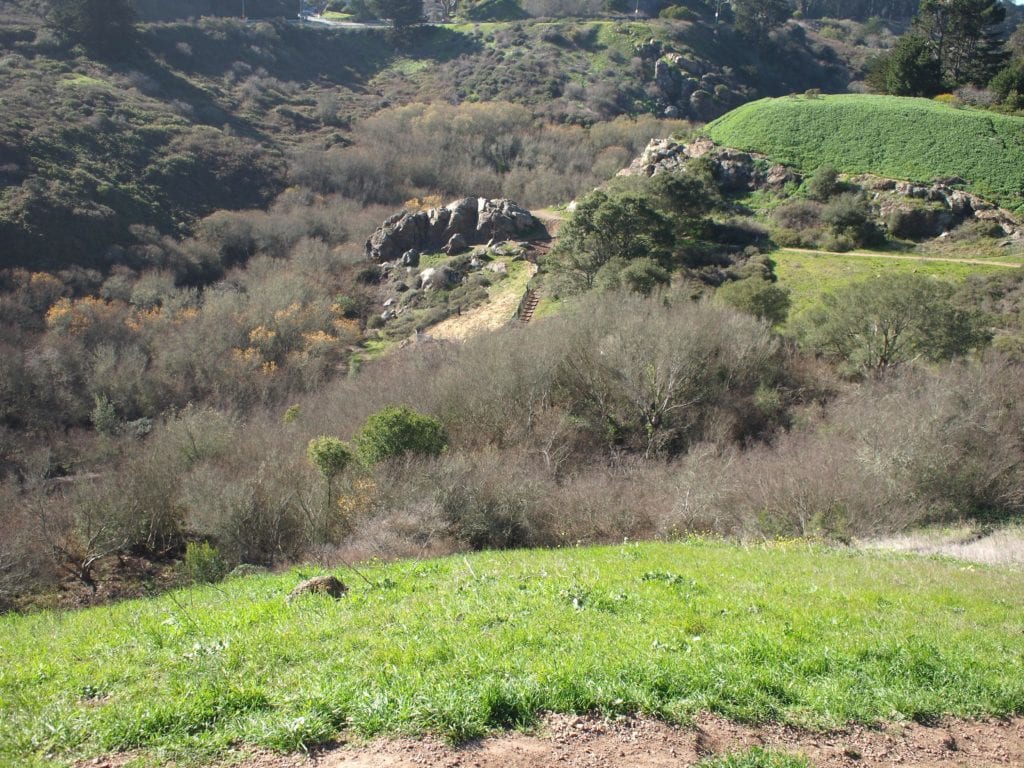
Barring any unseasonable rains, the Saddle Trail Project is scheduled for completion in March 2013. A 2008 California Department of Parks and Recreation Habitat Conservation Fund Grant of $157,000 is funding the Saddle Trail Project. Lisa Wayne, Recreation and Parks Natural Areas Program Manager, wrote the grant.
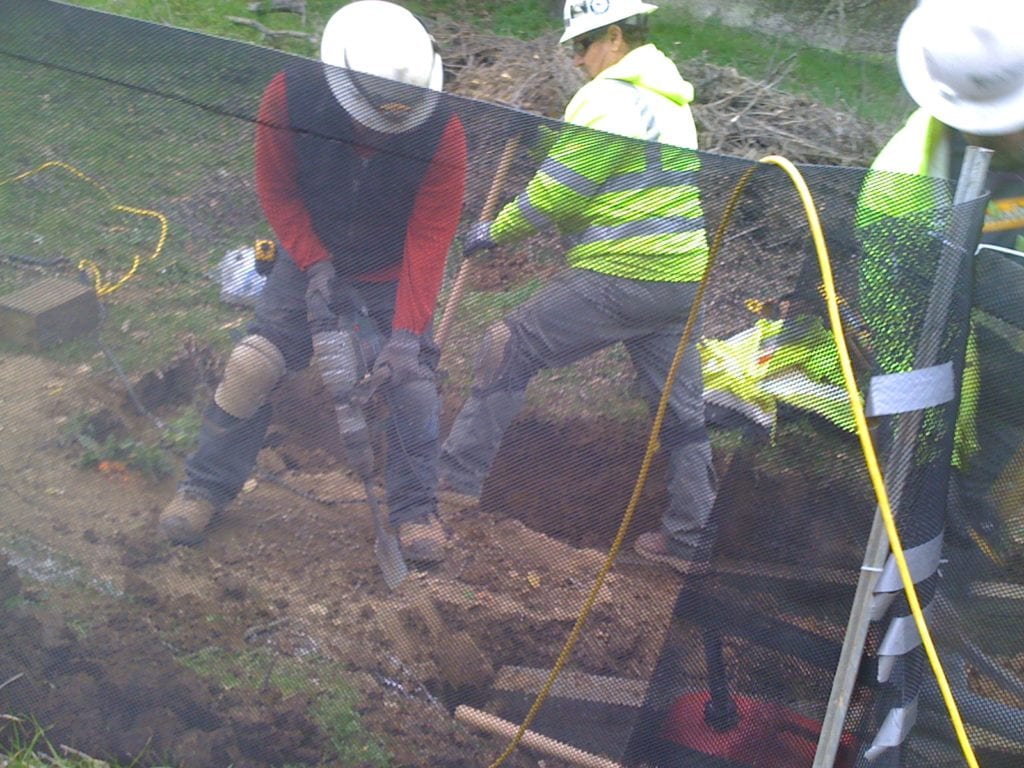
This project is independent of the Glen Park Renovation Project, which is scheduled for completion in November 2013 and is paid for by the 2008 Clean and Safe Neighborhood Parks Bond.
On January 23, a week into the construction, workers had already placed 40 box steps along the incline. On a brisk and grey morning, NAP manager Christopher Campbell surveyed the labor, as four workmen from Yerba Buena Construction Company carried the forty-first box step, past jack hammers and shovels hugging the trail’s edges. The men were only half way up the slope, and they struggled under the weight of the step, which weighed in at over 100 pounds.
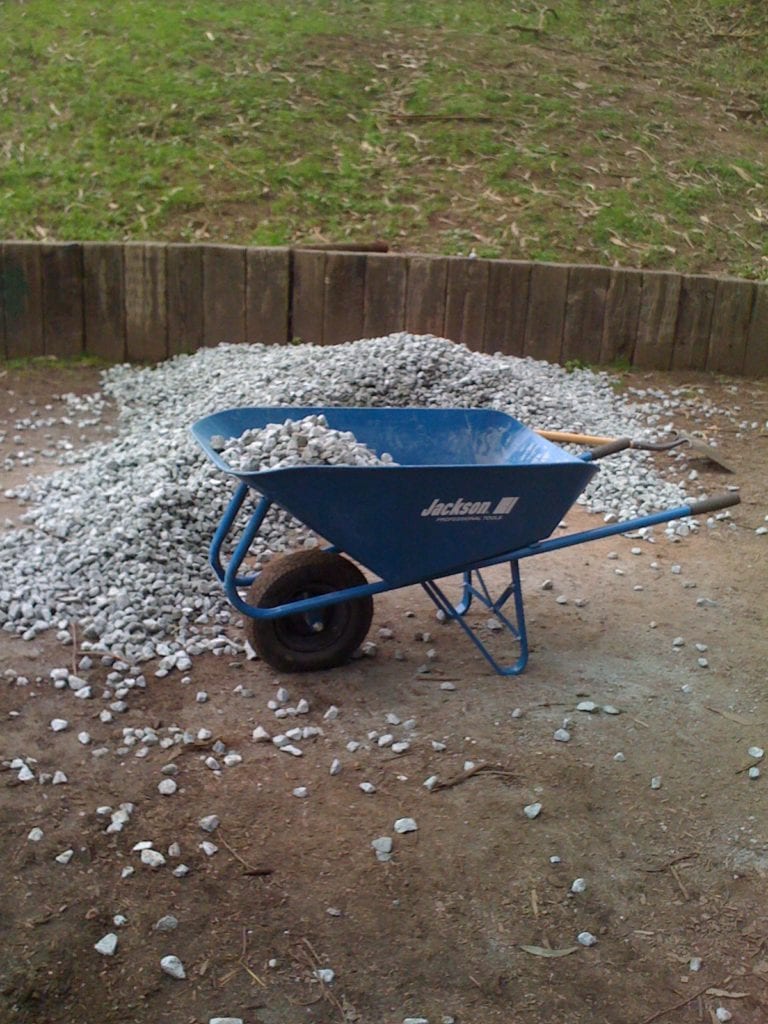
“The steps are designed to prevent erosion into the creek, as well as sediment into the Bay,” said Campbell, who is charged with the management of Glen Canyon’s 70-acre natural area, one of 32 such natural spaces in San Francisco. Narrower steps will descend the western slope on the other side of the saddle, said Campbell.
While Campbell watched, the construction workers placed the box step next to its brethren. The laborer circled its perimeters, tamping it down, squaring it off, ensuring it was plumb. Above Campbell, a song sparrow skedaddled among willow branches while a gopher scurried back to its hidey-hole, sequestering itself from a red-tailed hawk scouting for a mid-day morel.
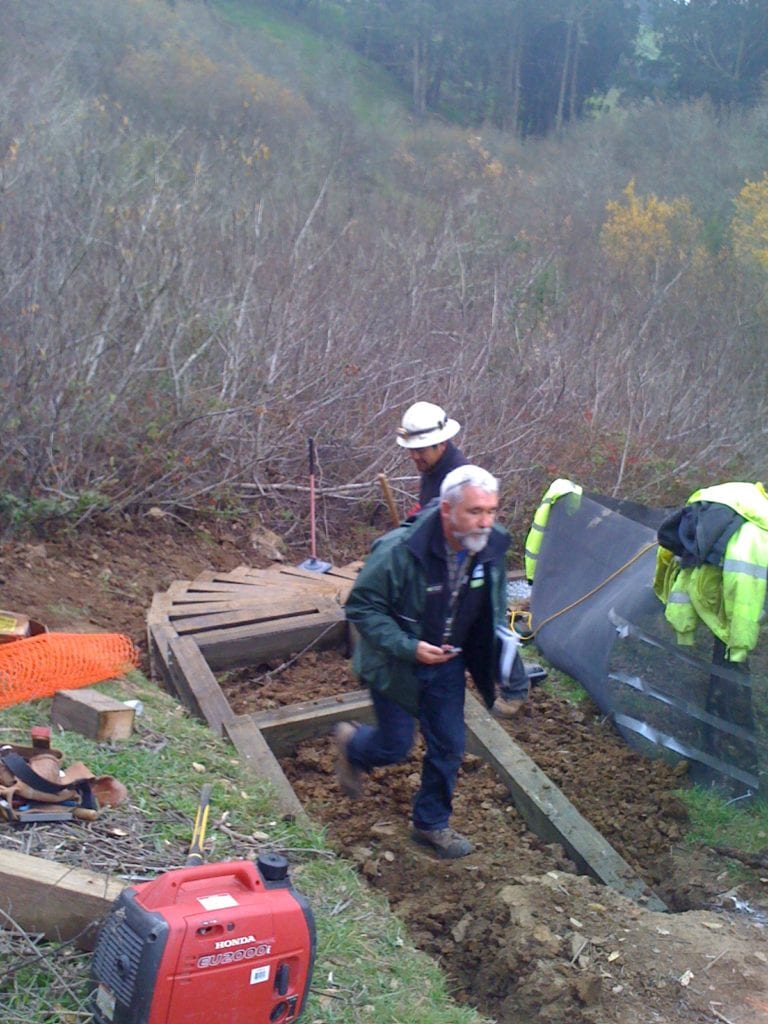
Each box step is made of six-inch by eight-inch pressure treated timber. They are placed over leveled earth and topped with three-quarter inch drain stone that had earlier been wheel barrowed up the slope. The drainage rock helps to ensure that mud doesn’t run off onto the trail, said Campbell.
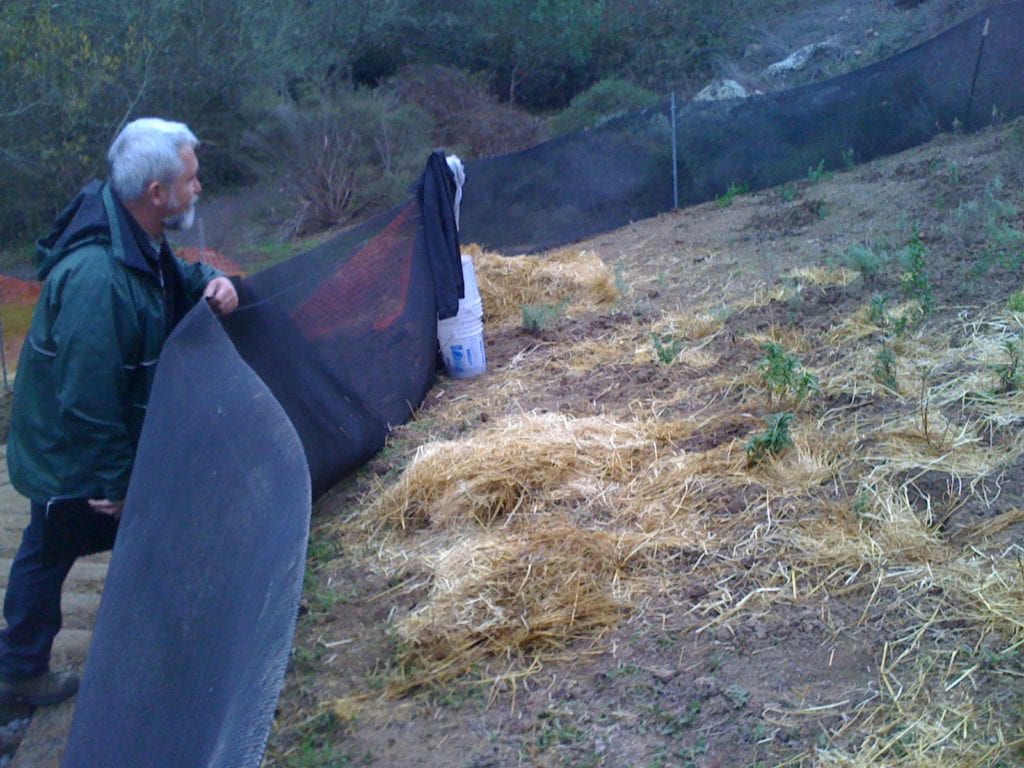
A workman manhandled a jackhammer and began preparing the ground for another box step. Its staccato rat-a-tat echoed, drowning the sparrow’s soprano and frightening an unleashed dog that had ventured onto the stone steps below. The dog scuttled back to its owner, and both high tailed it back toward the NAP managed seep adjacent to the boardwalk.

Campbell continued up the hill. He stopped at the serrated chert outcropping, which looked razor sharp but never seems to deter rock climbers from challenging it. Wedged between two sides of the rock formation and silhouetted by its ragged cliffs, Campbell stood framed by the northern end of the canyon, and one could understand why the formation was named after a saddle.
Campbell pointed down the incline to his right, down the western portion of the slope where the trail circled past a split rail fence built by Friends of Glen Canyon Park several years ago. “The steps planned for this side won’t be box steps,” he said. “They’ll be narrower, like the stringer steps one finds in a house.”
The Saddle Creek Project is the third of three major elements to the Glen Cayon Park Islais Creek Restoration Project, which went through a series of stakeholder public meetings in 2011 and 2012, said Rec and Parks’ Connie Chan. Already completed are:
- creek restoration work that included removal of Cape ivy and Himalayan blackberry from the creek and watershed, where these invasive plants threaten the health of the creek’s riparian habitat.
- Repair of the dam near the Recreation Center, which prevents sediment from entering the Bay.

City workers weren’t the only ones working on the trail. On January 19, Friends of Glen Canyon Park volunteers Ken and Monika Lewis and Kathy Velykis planted 50 California native plants adjacent to the slope. They included coyote mint, silk tassel, coyote brush and California sage. A total of 435 new plantings now grace the hillside.
On Jan. 23 Gloria Koch and another volunteer positioned straw surrounding the fledgling plants to protect them. “Plant diversity leads to animal diversity,” Koch, a 28-year employee of Recreation and Parks said later over a cup of coffee at the village’s Higher Grounds. “Shrubs will be excellent shelter for coyotes.” On her daily walk Koch has watched the project unfurl across the hill. She dubs it “graceful, a work of art and park management at its best.”
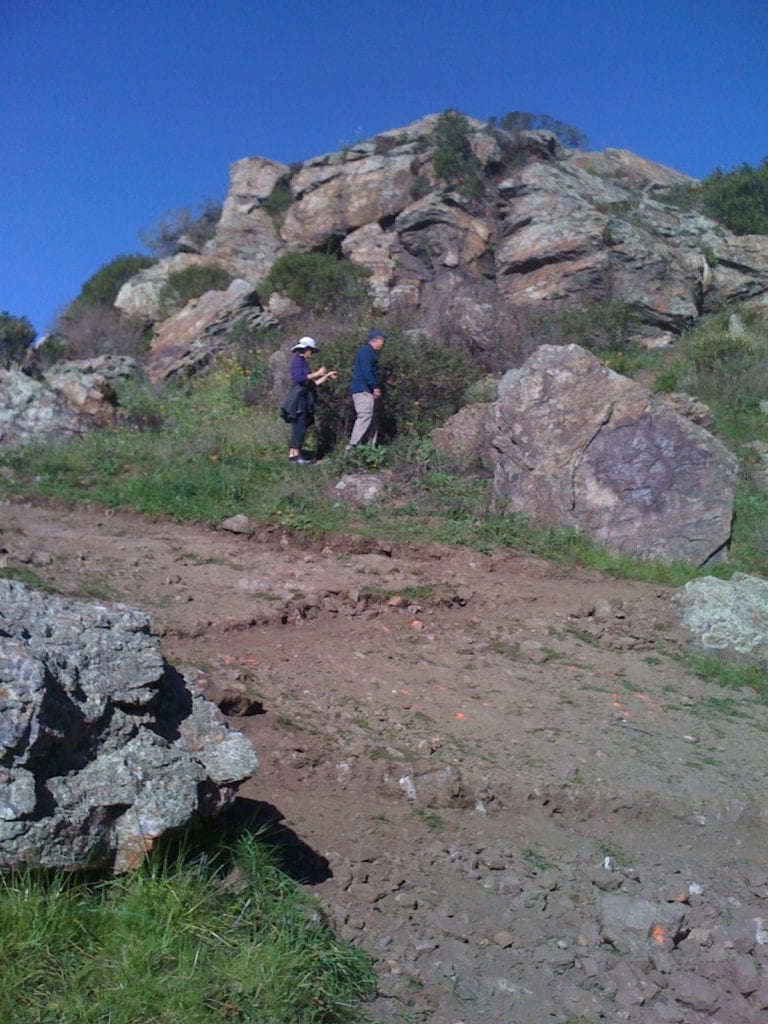
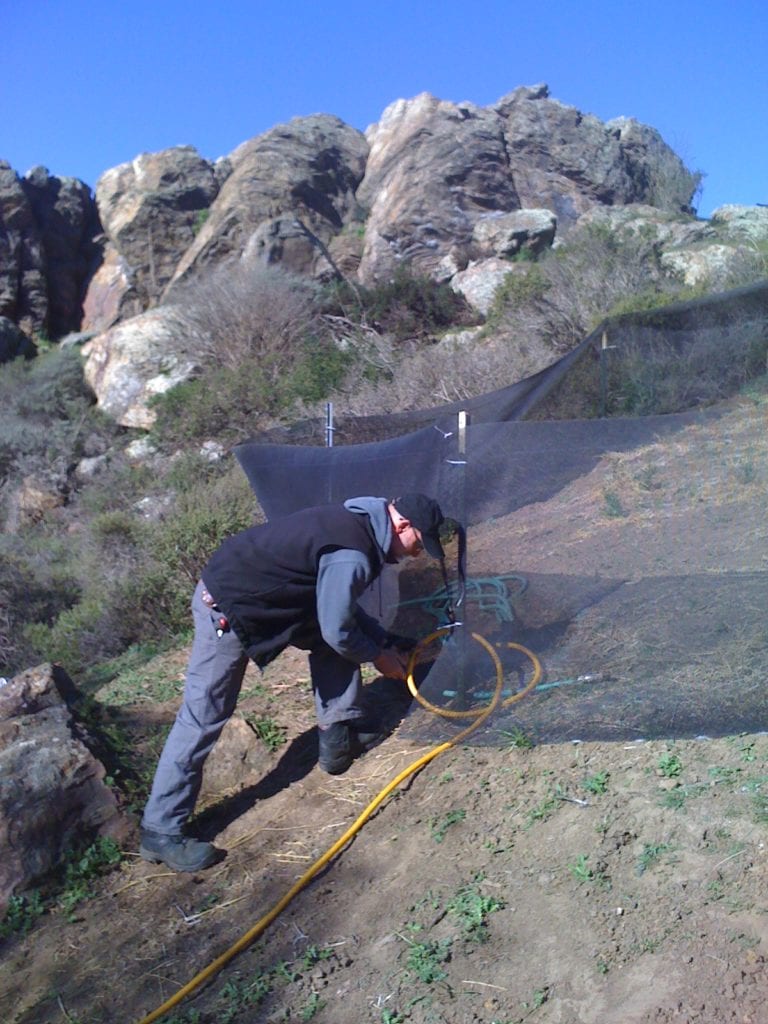
The volunteers kneeled and sculpted a moat of straw around a sticky monkey flower seedlings, patting the straw berm, some of it mushy from earlier rains, into place. “The straw keeps in moisture and suppresses weeds,” said Campbell. “Plus it means we don’t have to flag the plants.”
And of course jack hammers in the hills weren’t the only activity in the park on the 23rd. Down at the Elk street entrance earthmovers scooped mouthfuls of cement and dirt, preparatory to fashioning a child-friendly automobile drop of for Glenridge and Silver Tree parents.
Utilizing a portion of the dedicated $900,000 trail money from the 2008 Clean and Safe Neighborhood Parks Bond, a “connector” park entrance from Portola Drive is envisioned. Such a path, adjacent to the School of the Arts on SFUSD property, will increase canyon entry even further.